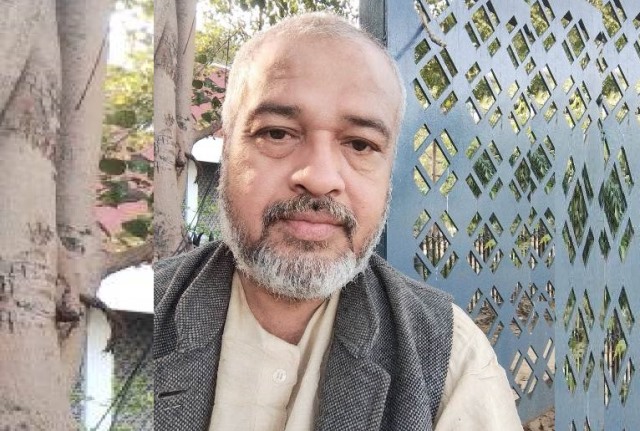Vistasp Hodiwala, an advert professional in Mumbai, shares a toolkit to fight back hatred and bring back Kashmiris into mainstream. Read on:
The first couple of sentiments the Pahalgam tragedy triggered was a deep sense of dread, followed by deja vu. Think! We have been here before, again, and again, and again; so many times since 2014.
Earlier, any such tragedy evoked a healthy debate on policy issues, the whys, wherefores and hows. There were voices clamouring for accountability. But for the past decade and more, the questioning has literally gone extinct. In its place we have hyper-nationalist homilies from our ministers, dog-whistles from the highest posts in the land, and the media openly and monstrously baying for the blood of Muslim community. The courts do not even bother.
When a tragedy like Pahalgam takes place, it’s natural for the citizens to first and foremost empathise with the victims, and feel anger against the perpetrators. A revulsion for terrorists is entirely expected. What is inexcusable though is to hold every innocent Muslim across the country responsible for the dastardly acts of a few who wish to sow such divisions.
This is a territorial war we were mistakenly made to believe we had already won, by a government that thrives on false bravado and typical hubris. A policy failure, essentially. Finding easy targets within one community helps sidetrack this failure in more ways than one. For our rulers and their supporters, this has now become SOP 101.
As we have known since long, the BJP machinery operates 24×7 through thousands of Facebook pages, countless X handles and WhatsApp groups. The idea is to drown out dissent, incisive analysis and alternative views in an ocean of schizophrenic commentary that allows no room for logic, nuance or tough questions.
When the entire ecosystem has been so elaborately designed to protect the higher-ups, it’s not the question of WHO but HOW we will question the government.
Ordinary Kashmiris didn’t drop off from Mars or Jupiter. They have the same human emotions we do. They hurt just as badly.
When an average citizen sees something so utterly ghastly unfold in front of him or her, it is inevitably their best side comes to the fore. It is no surprise therefore to find Kashmiris react in the same way as any decent, normal individual would. The fact that we have to actually make a big deal of this speaks more about the times we are in, than about them.
The relationship between tourists and locals anywhere in the world is essentially a symbiotic one, and while they may not become friends for life, there is a sense of bonhomie that binds such ephemeral relationships. Muslim or Hindu, no one can revel in senseless killing when they happen at a frightfully close range.
ALSO READ: Terror, Religion And Sinister Social Media Solution
On one hand, Kashmiris have to grapple with the guilt (that some of their own were responsible for the carnage), and, on the other, they had to live with the palpable fear of all-consuming hatred that would follow. They did everything they could; one even gave up his life to save a Hindu family. Survivors were all praise for them. But that narrative won’t suit our chronic hate-mongers whose very raison d’être rests on fuelling divisions.
When institutions fail, citizens must rise. Very few of us, even after a decade, have the guts to challenge hate-mongers within our own circle of friends and family. Our social media handles are yet ‘private’. We are either too polite, too fearful, or too indifferent. This is not an easy battle. When ‘speaking out’ comes with a cost and starts affecting jobs and relationships, the choice is never easy.
But it’s not all dark. We see so many sensible people around us, we must keep faith and plod on. There are no easy solutions here but there is hope.
We must separate the online behaviour of the mob from the offline existence of upright citizens who don’t even have a social media account. Social media has a tendency to amplify hatred much faster than sensibility. But talk to your regular shopkeeper, talk to your students, talk to your friends, security guards, talk to everyone who holds you in good stead, and push back the hate narrative. Go out and share positive stories of communal harmony. Even when they don’t ‘like’ your post, remember that you have created a small dent in the narrative already.
Yes, that’s the only way to fight the unrecognisable beast that has been foisted upon us by our ruling elite.
We consider Kashmir to be our own, but what about Kashmiris who have suffered indiscriminately at the hands of militants as well as our security forces? How many people remember or even know about the alleged story that an English magazine has done about the unimaginable treatment a section of own army has reportedly meted out to innocent Kashmiris
Just as the Gaza crisis did not start on October 7, 2023, the Kashmir crisis too does not find its origin on the date this terrible tragedy happened. Many citizens in mainland India literally cheered when J&K’s statehood was taken away. If we are serious about this land and its beautiful people, we can start by recognising them as human beings first and foremost.
Help Kashmiris feel one of our own, restore their dignity, make them feel an equal voice, give them uninterrupted public services (including the Internet), and see them as people of flesh and blood, not a chunk of land that defines your national ego. Once you do that, you will earn the right to say Kashmir is an indivisible part of India, not before that.
As told to Amit Sengupta


